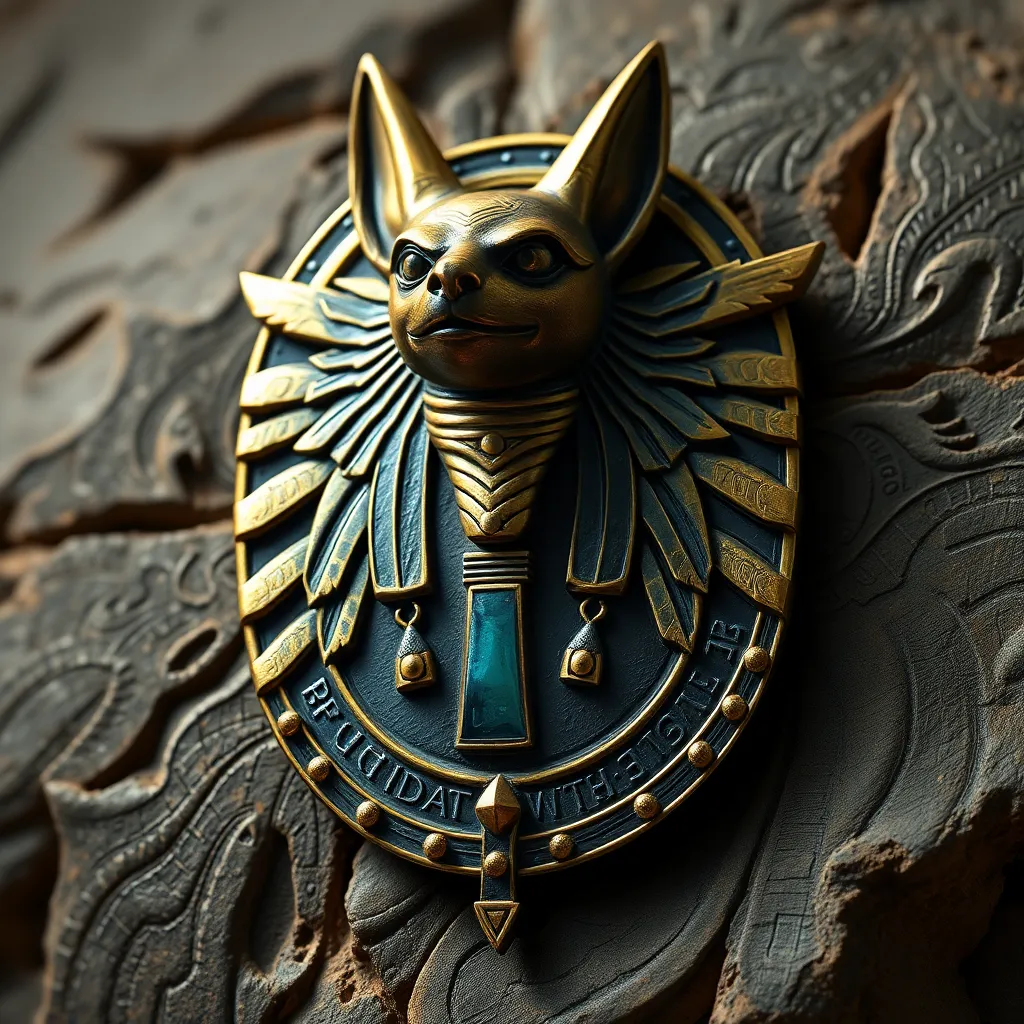The Amulet of Anubis: Guardian of the Afterlife
I. Introduction
Ancient Egyptian civilization is renowned for its rich tapestry of beliefs surrounding the afterlife, a realm that was meticulously prepared for the deceased. Central to these beliefs was Anubis, the enigmatic god who presided over mummification and the protection of the dead. The Amulet of Anubis, a powerful symbol of this deity, held great significance within ancient culture as a guardian against the uncertainties of the afterlife.
II. The Mythological Background of Anubis
Anubis, often depicted as a man with a jackal’s head, has origins that trace back to the earliest periods of Egyptian mythology. He is primarily recognized as the god of mummification and the afterlife, playing a crucial role in guiding souls to their final resting place.
- Origins of Anubis: Anubis’s image and role evolved over time, with some myths suggesting he was the son of Osiris and Nephthys, while others claim he predated these gods.
- Mummification and Afterlife: Anubis was intimately involved in the process of preparing the dead for the afterlife, overseeing the ritual of embalming and the protection of the deceased’s body.
- Symbolism: Anubis symbolizes protection, guidance, and the transition of the soul, embodying the hope for a safe passage to the afterlife.
III. The Purpose and Meaning of the Amulet
Amulets were a prevalent aspect of ancient Egyptian culture, believed to provide protection and strength to their bearers. The Amulet of Anubis specifically served several significant purposes:
- Historical Significance: Amulets were commonly used throughout Egyptian history, often placed in tombs or worn by the living to invoke protection.
- Functions of the Amulet: The Amulet of Anubis was believed to grant the wearer the favor of Anubis, ensuring safe passage in the afterlife.
- Protective Qualities: It was thought to ward off evil spirits and provide comfort to the soul of the deceased.
IV. Design and Symbolism of the Amulet
The Amulet of Anubis was crafted with great care, often using materials like gold, silver, or precious stones. Its design showcased the artistry of ancient Egyptian craftsmen:
- Description: Typically small in size, these amulets were intricately designed to resemble Anubis and were often worn as necklaces or placed within tombs.
- Iconographic Elements: The amulet featured distinct iconography, including Anubis’s jackal head, hieroglyphs, and symbols of protection.
- Variations: The design of the amulet varied across different periods, reflecting the evolving styles and beliefs of the time.
V. Rituals Involving the Amulet
The Amulet of Anubis played a vital role in various rituals, particularly those associated with funerary practices:
- Funerary Practices: The amulet was often placed on the deceased to ensure their protection in the afterlife.
- Mummification Process: Anubis was believed to oversee the mummification process, making the amulet an essential part of this ritual.
- Protection Rituals: In other rituals, the amulet was used to protect the living from malevolent forces.
VI. Archaeological Discoveries and Historical Context
Numerous archaeological discoveries have shed light on the significance of the Amulet of Anubis within ancient Egyptian society. Notable finds include:
- Archaeological Finds: Excavations in tombs have uncovered many amulets, providing insight into their use and cultural importance.
- Historical Context: The amulet reflects the beliefs and practices surrounding death and the afterlife, indicating its central role in Egyptian spirituality.
- Modern Studies: Contemporary scholars continue to study these artifacts to gain a deeper understanding of their significance in ancient rituals.
VII. The Amulet of Anubis in Popular Culture
The image of Anubis and his amulet has transcended ancient texts, finding its way into modern media and culture:
- Modern Media: Anubis appears in films, video games, and literature, often depicted as a guardian figure.
- Contemporary Perceptions: The amulet has influenced how people view ancient Egyptian beliefs, highlighting themes of protection and the afterlife.
- Role in Art: Artists frequently draw inspiration from Anubis, creating works that reflect the mystique of ancient Egypt.
VIII. Conclusion
The Amulet of Anubis stands as a powerful emblem of the ancient Egyptian belief in the afterlife and the protective qualities of this revered deity. Its significance is evident in both historical contexts and modern interpretations, symbolizing the enduring legacy of Anubis as a guardian of the dead. As we explore the depths of ancient Egyptian mythology and its artifacts, the Amulet of Anubis invites us to reflect on the mysteries of life, death, and what lies beyond.




